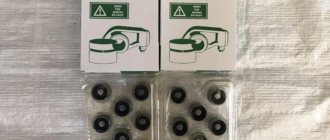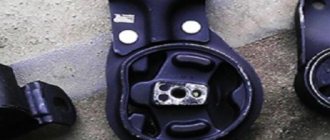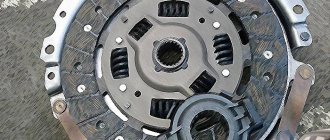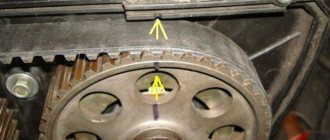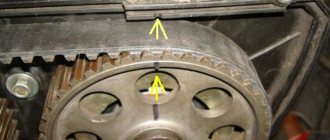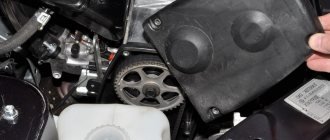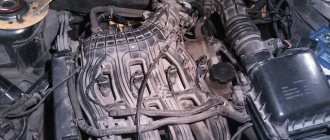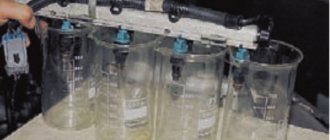Any experienced car enthusiast knows how important the gas distribution system, abbreviated as timing, is in a car. Its task is to supply air to the cylinders, where a working mixture is created to start and operate the engine. After the mixture burns out, exhaust gases are formed, which must be removed from the system, and here the timing belt also plays a decisive role.
For the correct operation of the timing belt, reliable operation of the hydraulic compensators is important. These devices are responsible for opening and closing the air intake valves. Moreover, they are responsible for opening the valves to a strictly defined amount, no more and no less.
If the hydraulic compensators break down, the gap size will be disrupted, which will lead to a phase failure of the gas distribution system. A car enthusiast can detect a problem by a characteristic knocking sound, which often causes panic even for experienced drivers. Today we’ll talk about how hydraulic compensators are replaced on a Priora with a 1.6 engine with 16 valves with or without air conditioning.
Malfunctions and their causes
As mentioned above, the design of hydraulic compensators is extremely simple. But even such simple parts fail. There are three main signs that indicate that something is wrong with the hydraulic compensators:
- While the engine is running, a quick knocking noise is clearly audible.
- Engine power drops significantly, especially at high speeds.
- The engine runs rough, even at idle.
If any of these signs are observed, then it’s time to change the hydraulic compensators. The main problem with these parts is that they are extremely sensitive to the quality of the engine oil. Sometimes it doesn’t even get to the point of replacing hydraulic compensators. The car owner simply drains the old oil, fills in new oil (after flushing the engine) and the knocking disappears. If the problem does not go away, it means that there is mechanical wear of the hydraulic compensators (usually this occurs due to the so-called metal fatigue).
We recommend: The best ways to replace fine and coarse fuel filters on a VAZ 2109/2114/2115
Hydraulic compensator for a car - simple about complex things!
In order to understand the principle of operation of the hydraulic compensator, and therefore determine why it fails and how to repair it, you need to remember the design of the engine. Do you remember how the valves are located and what they are for? The intake valve is responsible for the supply of fuel, and the exhaust valve is responsible for the exit of gases exhausted during fuel combustion in the engine.
So, a hydraulic compensator is a device that regulates the valve clearance automatically, thus ensuring a uniform supply of fuel to the working chamber of the engine and the exhaust outlet. Installing hydraulic compensators eliminates the process of manually adjusting the valves for the manufacturer's servicemen, which, by the way, is very labor-intensive and time-consuming.
The process of replacing hydraulic compensators on a 16-valve valve
Hydraulic compensators produced by AvtoVAZ
So, if the diagnostics showed that the hydraulic compensators are out of order, then we replace them. Of course, first of all, you need to buy new ones. Now, consider the sequential replacement process:
- We dismantle the upper protective cover.
Fastening bolts are marked with an arrow
- We remove the receiver.
Removing the receiver from the car
- Now, it is necessary to dismantle the ignition module.
We unscrew the fastenings and dismantle the ignition model
- Disconnect the crankcase ventilation hose.
Unscrew the clamp and remove the crankcase ventilation hose
- Using a 10mm wrench, we dismantle the injector wiring harness bracket.
Using a wrench, unscrew the fastenings of the wiring harness.
- We dismantle the valve cover.
Removing the valve cover
- Now, you need to carry out diagnostics and press on the drifts.
The principle of operation and diagnostics of hydraulic compensators
- Next, we dismantle the camshaft pulleys.
We jam the camshafts and remove them
- Disconnect the oil pressure sensor wires.
Removing the oil pressure sensor
- Remove the bolts that secure the camshaft bearing housing.
Unscrew the camshaft mounting bolts
- We dismantle the rear support of the power unit.
Unscrew the rear engine mount
- Now, you need to remove the camshaft bearing housing.
We take out the bearing housing
- The spark plug wells need to be removed from the housing. Inspect them for the presence of oil.
- We dismantle the camshafts assembled with oil seals.
Removing the camshafts
- Remove the plugs that are located on the head and camshaft housing.
We take out the block head plugs
- We remove the hydraulic compensator from the cylinder head.
We take out the hydraulic compensators
- Lubricate the bearing journals and cams.
- We install new hydraulic compensators.
- We carry out the assembly in the reverse order, observing the order and tightening torque of the cylinder head.
If the replacement is correct, then after assembly and the first start of the engine, nothing should knock. If the knock remains, you need to disassemble everything again and carry out diagnostics, and then fix the problem.
Selection of hydraulic compensators
The choice of any spare part must be taken quite seriously. Hydraulic compensators are no exception. Let's consider possible options for installing them on the VAZ-2112 series:
- 2112-1007300 is the original catalog number of hydraulic compensators for the VAZ-2112. The cost is 3300 rubles . Manufactured by AvtoVAZ.
- Herzog HL0 7300 – an analogue substitute for the original part, which can be used for installation on a car. The price is 2700 rubles.
Hydraulic compensators manufactured by Herzog
- Master-sport 2112-1007300-SET/16/-MS is one of the options for replacing the original hydraulic compensator made in the Russian Federation. Certified and recommended for installation.
Which hydraulic compensator is making the knocking noise?
To determine which hydraulic compensator is making a knock (usually their number is equal to the number of valves in your engine), they use a diagnostic method “by ear”, using a technological version of such a medical device as a phonendoscope - you have almost certainly seen it on your therapist’s neck.
It is this device that allows the master to say exactly where the source of the knocking lies, although real professionals, of course, will determine this without any phonendoscope.
After diagnosing the knocking part, you need to remove the hydraulic compensator, thoroughly clean it, then install it in place and start the engine again.
If the knocking noise persists, the hydraulic compensator is considered to be out of order, and the service will replace it.
If the knocking continues after replacement, the reason most likely lies in the quality of the oil used, or in other engine components. The latter is unlikely, since diagnosing a sound source using a phonendoscope is an accurate procedure and, as a rule, does not cause failures.
How the system works
Hydraulic compensators are an integral attribute for many modern car models. Previously, valve stroke had to be adjusted manually, which was done on AvtoVAZ engines in earlier cars.
The hydraulic compensator is designed quite simply. It looks like a cylinder, inside of which a plunger is installed. Let's consider the principle of its operation step by step.
- When starting the engine, the device is affected by the camshaft cam.
- Under the action of the cam, the compensator moves lower, after which its plunger exerts pressure on the valve.
- Under the influence of pressure, the valve opens, but strictly to a certain height.
The operation of the devices is adjusted using ordinary oil. It enters the space located under the plunger, and the greater its pressure, the greater the load on the plunger itself.
Accordingly, the valve clearance is adjusted automatically, taking into account the oil level.
Operating principle of hydraulic compressors
Hydraulic compensator disassembled
The principle of its operation is as follows. When the cam is turned with its blunt side towards the pusher, a gap is formed, and at this time the plunger, under the influence of the spring, closes it, rising upward, and the oil through the channel, bypassing the ball valve, enters directly into its cavity.
When the camshaft cam is turned on the opposite side, it presses on the pusher, sending it down. And at this time the valve is closed by the ball, since the force of the cam is transferred to the plunger.
Signs and causes of malfunction
The main sign that the hydraulic compressors have failed will be their characteristic knocking sound, in which case for any car enthusiast this will be the first signal for diagnostics.
There may be several reasons for the malfunction:
- The service life of hydraulic compressors has been exhausted.
- The oil supply channels were clogged , resulting in oil starvation.
- Wear on the plunger pair caused by wear parts entering it.
If hydraulic compressors have worked their entire service life and require replacement due to wear and tear due to purely operational characteristics, then there is no reason for frustration. However, in two other cases, this will indicate problems in the operation of the oil pump, elements of the lubrication system, as well as inconsistencies in the type of oil for the engine.
The hydraulic compensator will work properly and for a long time only in cases where the entire working space is filled with oil. Otherwise, dynamic loads will gradually lead to its destruction, which will be the result of knocking. To diagnose hydraulic compensators, you can use a phonendoscope.
An example of hydraulic compressors knocking
Sequence of actions on Lada Priora
- Both terminals are removed from the battery.
- The wires on the injectors and on the ignition coil are disconnected, the cable is removed from the throttle, the air filter and all other wires that prevent access to the engine intake manifold are removed.
- Before removing the manifold, you will have to remove the belt from the generator, then unscrew its mounting bolt. After this, the generator can be moved to the side and you can get to one of the intake manifold mounting bolts (there is no other way to get to this bolt).
- The next step is to remove the ramp and fuel injectors (if the car has air conditioning, you will also have to remove its hoses so that they do not interfere).
- All other manifold mounting bolts are unscrewed, after which it is removed.
The valve cover is unscrewed with a 12 mm socket wrench.
- Now you can remove the valve cover, timing pulleys and camshafts.
Removing a previously unscrewed valve cover
- Since we now have access to the hydraulic compensators, all that remains is to replace them with new ones (we should also change the seals on the camshafts and the sealant on the valve cover).
After removing the cover, the camshafts are removed
Worn hydraulic compensators are removed from their sockets
- After this, the above components are reassembled. The instructions below are suitable for cars with 16 valves.
Replacing hydraulic compensators on a VAZ-2112 is not so easy, but you can do it yourself. Of course, this will require time and effort. The choice of product should also be taken quite seriously, because the resource of use depends on the quality.
About hydraulic compensators for BAZ 2112
How to get rid of knocking?
- change the oil and oil filter;
- clean or replace the oil receiver;
- flush the lubrication system;
- clean the channels through which the lubricating fluid passes;
- replace the hydraulic compensators of the VAZ 2112.
Causes of knocking and ways to eliminate them
- the oil has become unusable;
- The oil filter has reached the end of its service life;
- the oil receiver is dirty or broken;
- the channels through which the lubricant flows are clogged;
- Mycop got into the hydraulic compensators;
- The lubrication system is clogged.
- instead of the oil sensor, insert a fitting;
- apply oil there under pressure - it’s better to use it instrumentally, because it’s more liquid.
If none of the above helps...
- No one guarantees you that others won’t break down after some time. That is, the risk that you will do or pay for the same work several times is very large. It’s better to change everything at once - it will take less time, and the money will be safer.
- Typically, hydraulic compensators are sold as a set, not individually. In any case, you will take everything. So why not install all new ones right away?
Why do you need hydraulic compensators for the BAZ 2112?
My camshafts didn’t turn, I took everything apart, but I couldn’t get the hydraulics out. You press on them, they stand there dead, what could be the reason?
Thank you! Very necessary information. I'll try to change the oil, I'll write what happens.
When it’s cold, it doesn’t knock, or at least barely audibly, but as it warms up, the knocking intensifies. What should be the pressure when the engine is warmed up?
Thank you very much, I’ll also try to change the oil and filter. I'll see what happens.
I got my head full, completely new headers, but the knocking doesn’t stop
Why do the valves knock? The hydraulic compensator was changed, the oil too, the pressure sensor is on, the car does not pull.
The camshafts could be worn out, if new camshafts don’t help, then throw away the head
If you have a BAZ 2106 and the distributor has failed, then this article is for you. From it you will learn: which distributor to buy, how to check its functionality, how to install and configure it, and also how to adjust the contact gaps of the breaker.
Are you ready to replace the struts on your BAZ 2110? Then hurry up and read the article. Here you will find out which racks from which companies are best to buy, which racks will make the car softer, and which ones will make the car harder. The article also provides a step-by-step guide to replacing all racks.
The article is intended for owners of the VAZ 2109 who have problems with the side member. From it you will learn how much replacement costs, when to change it and when to weld it, the sequence of work when replacing, etc.
